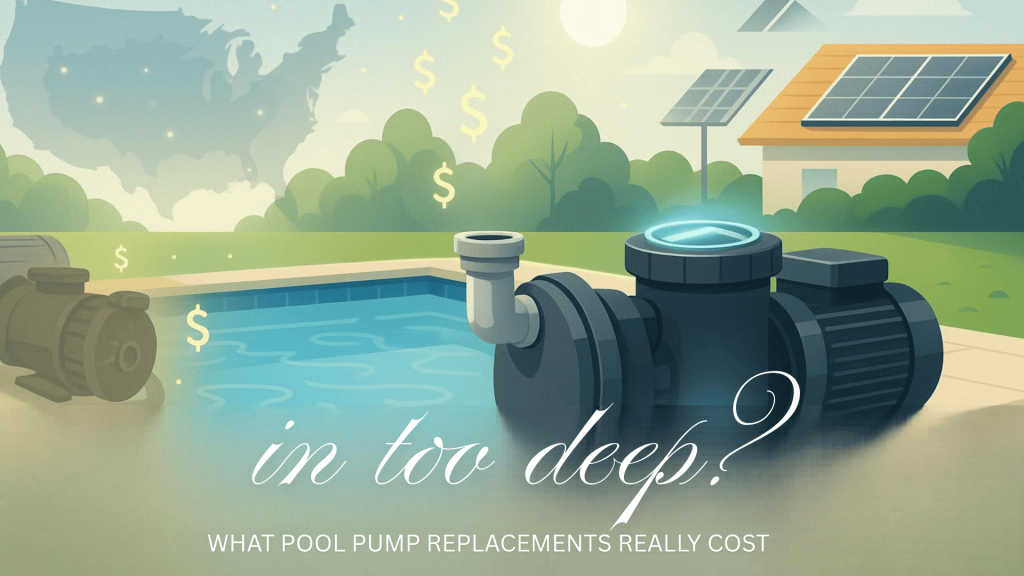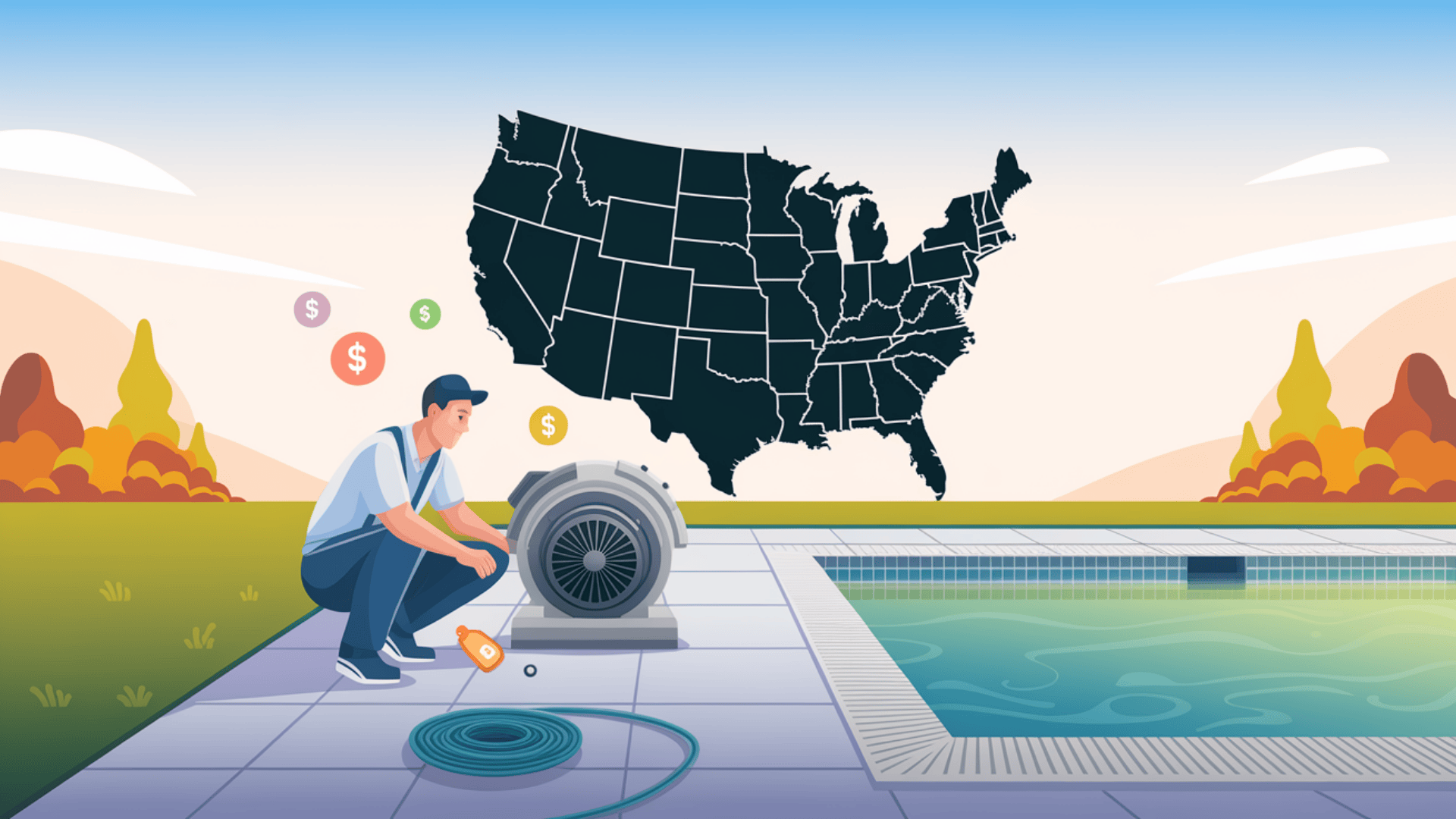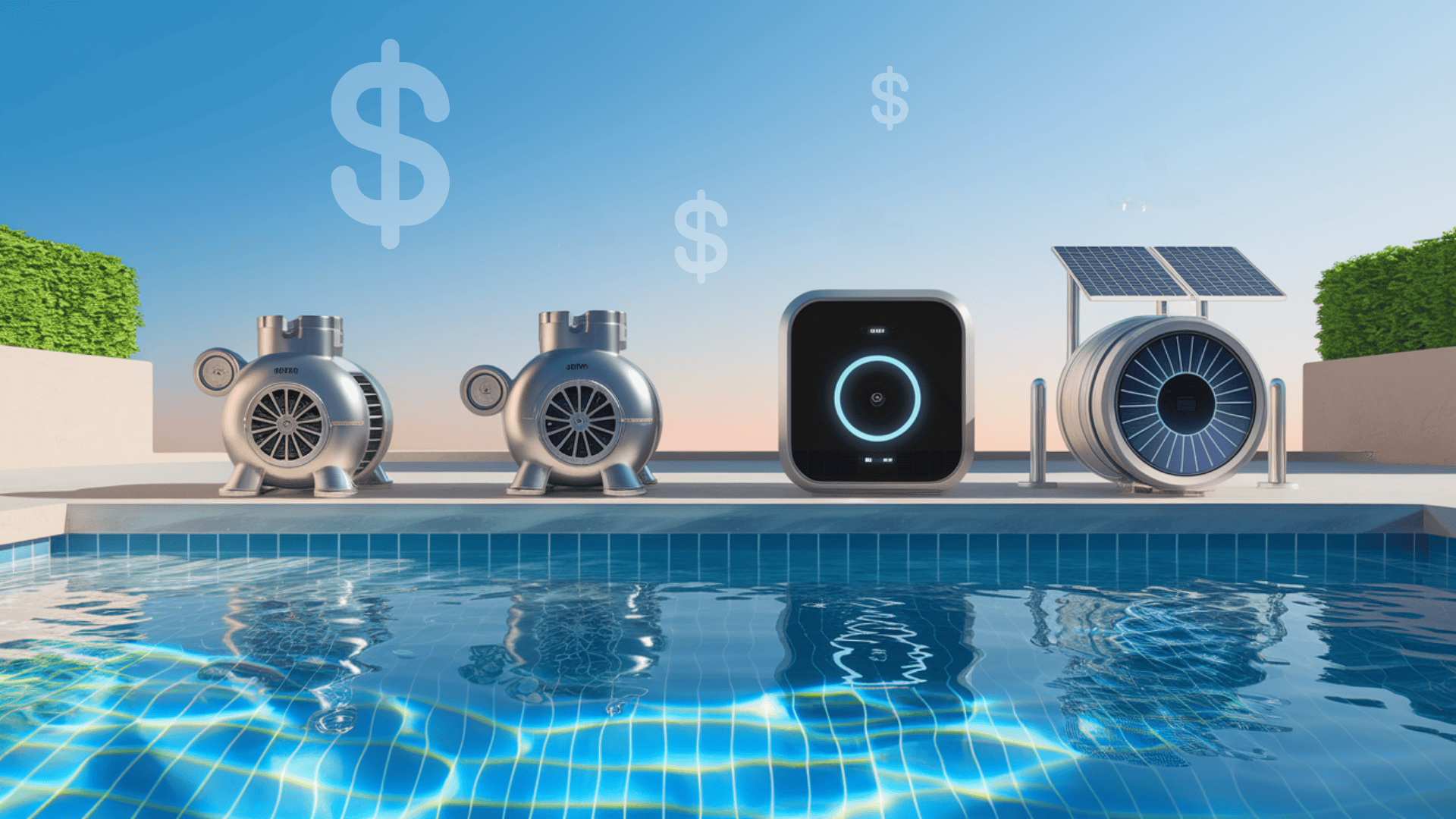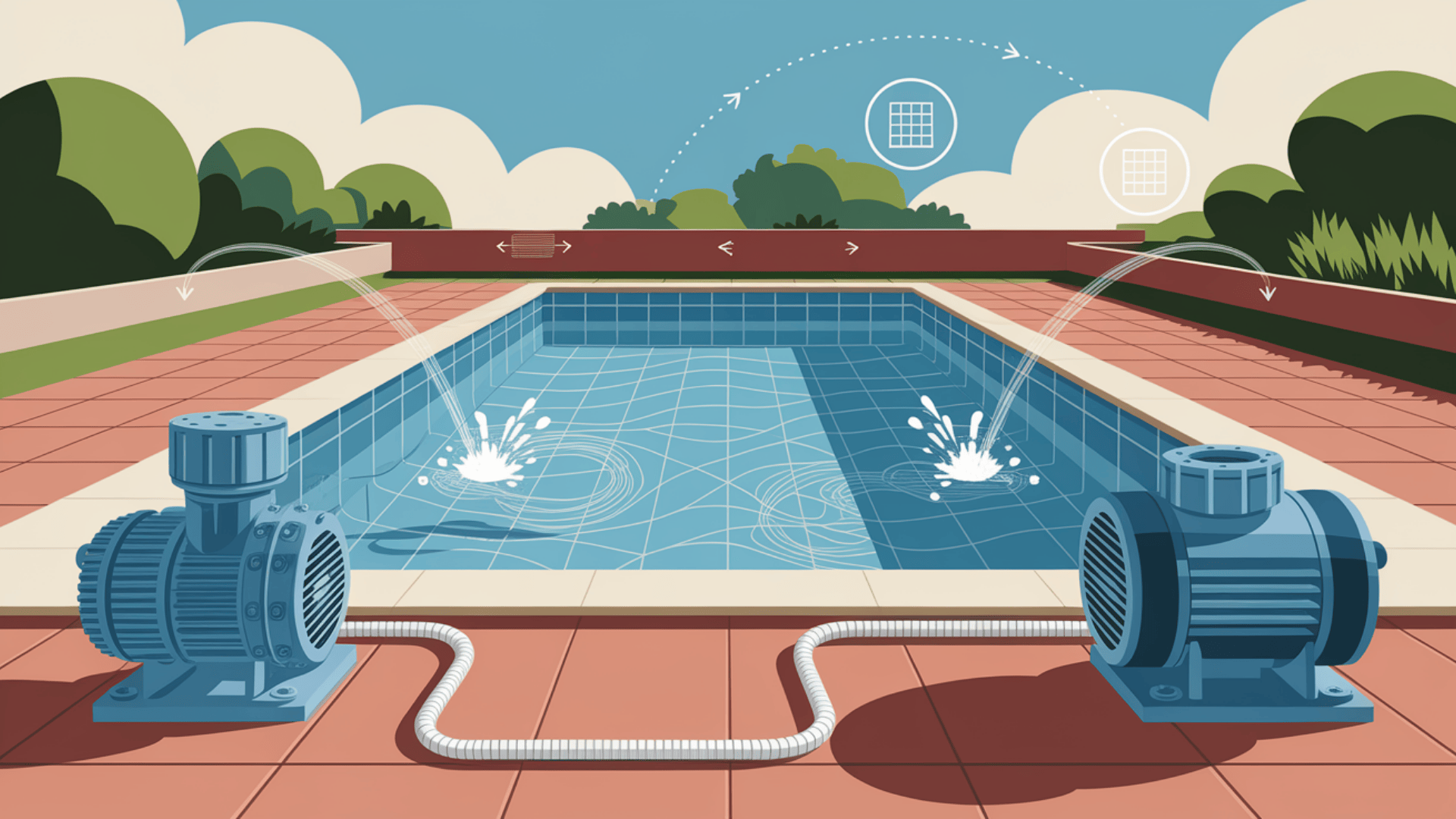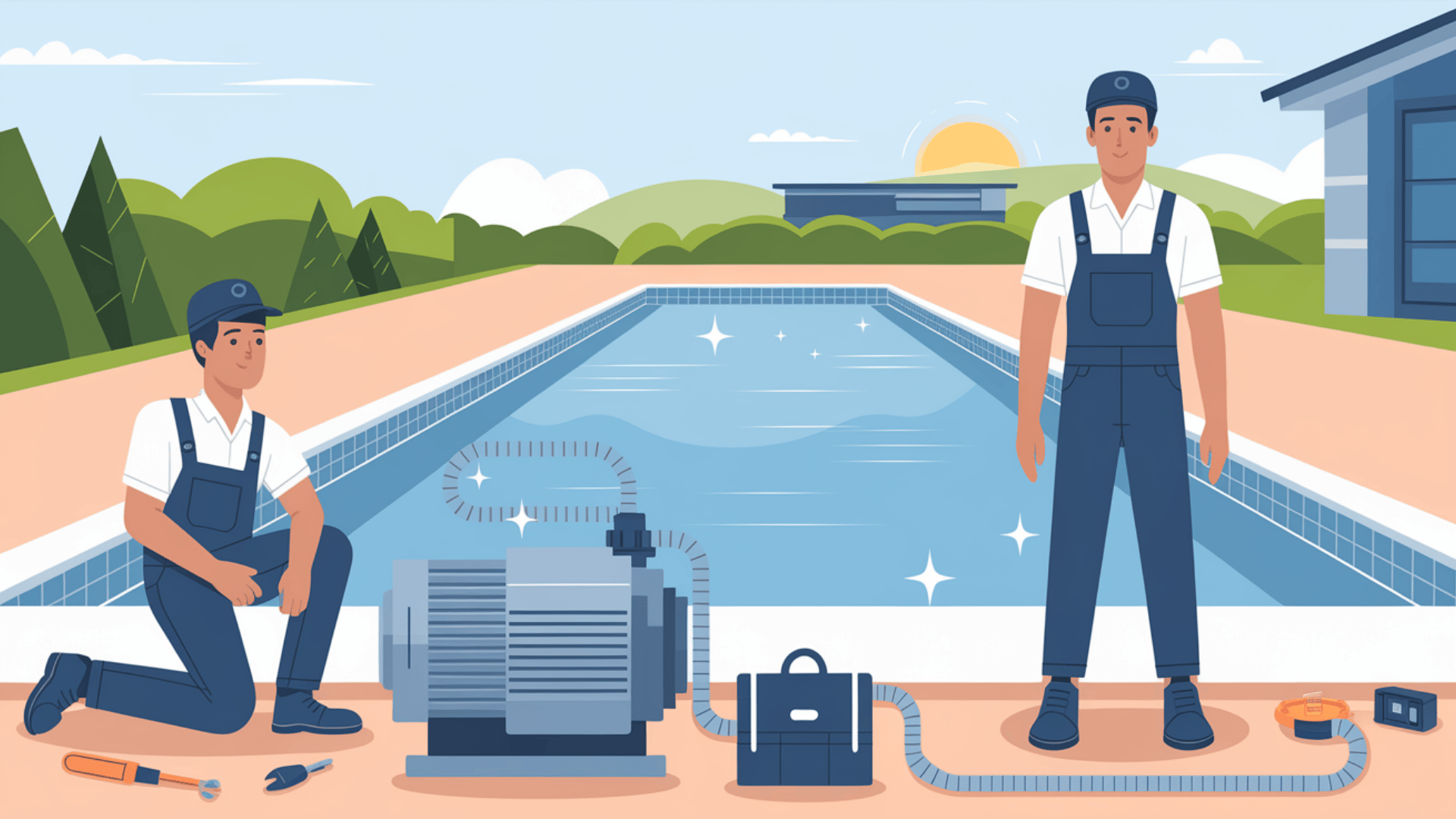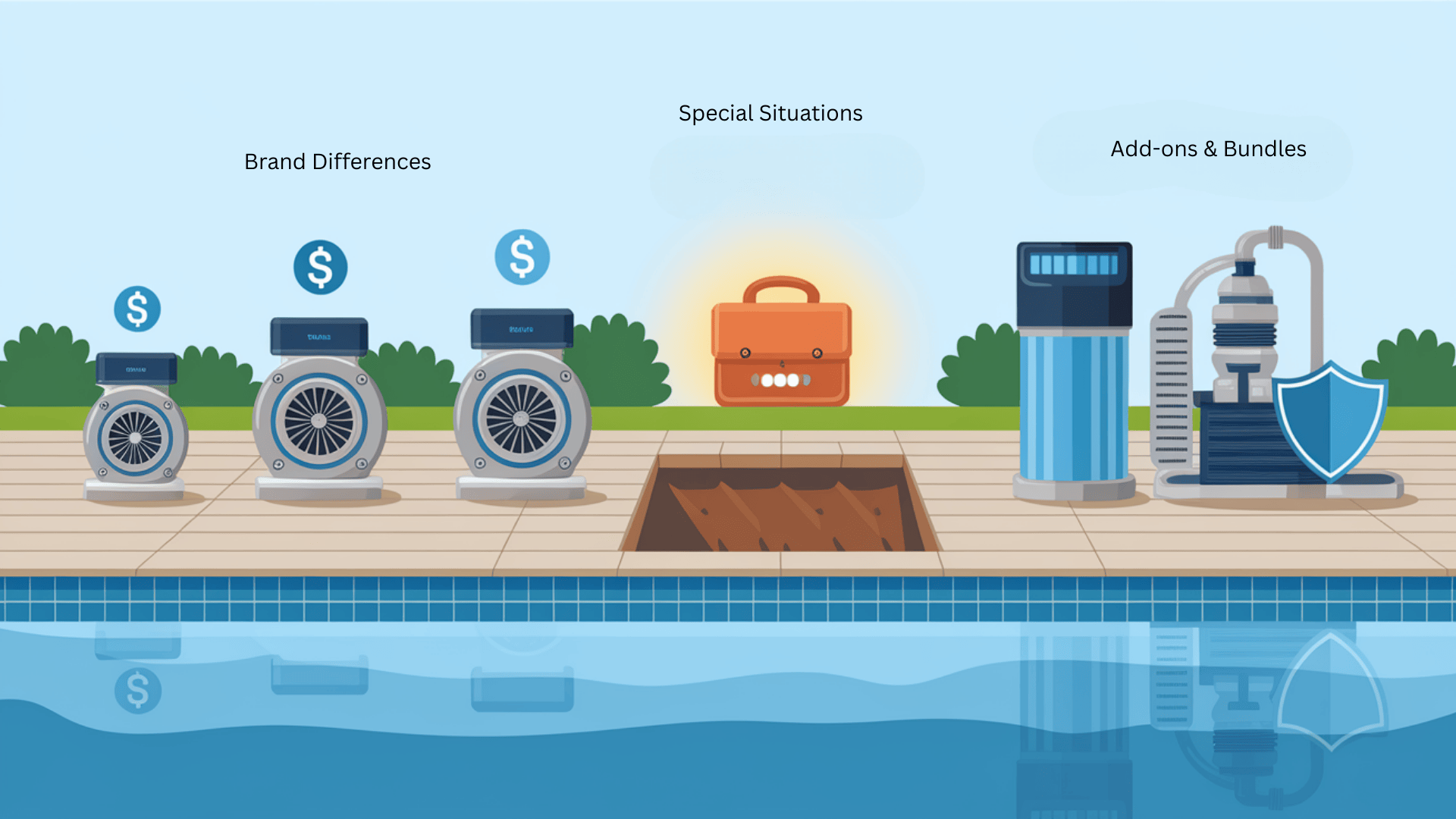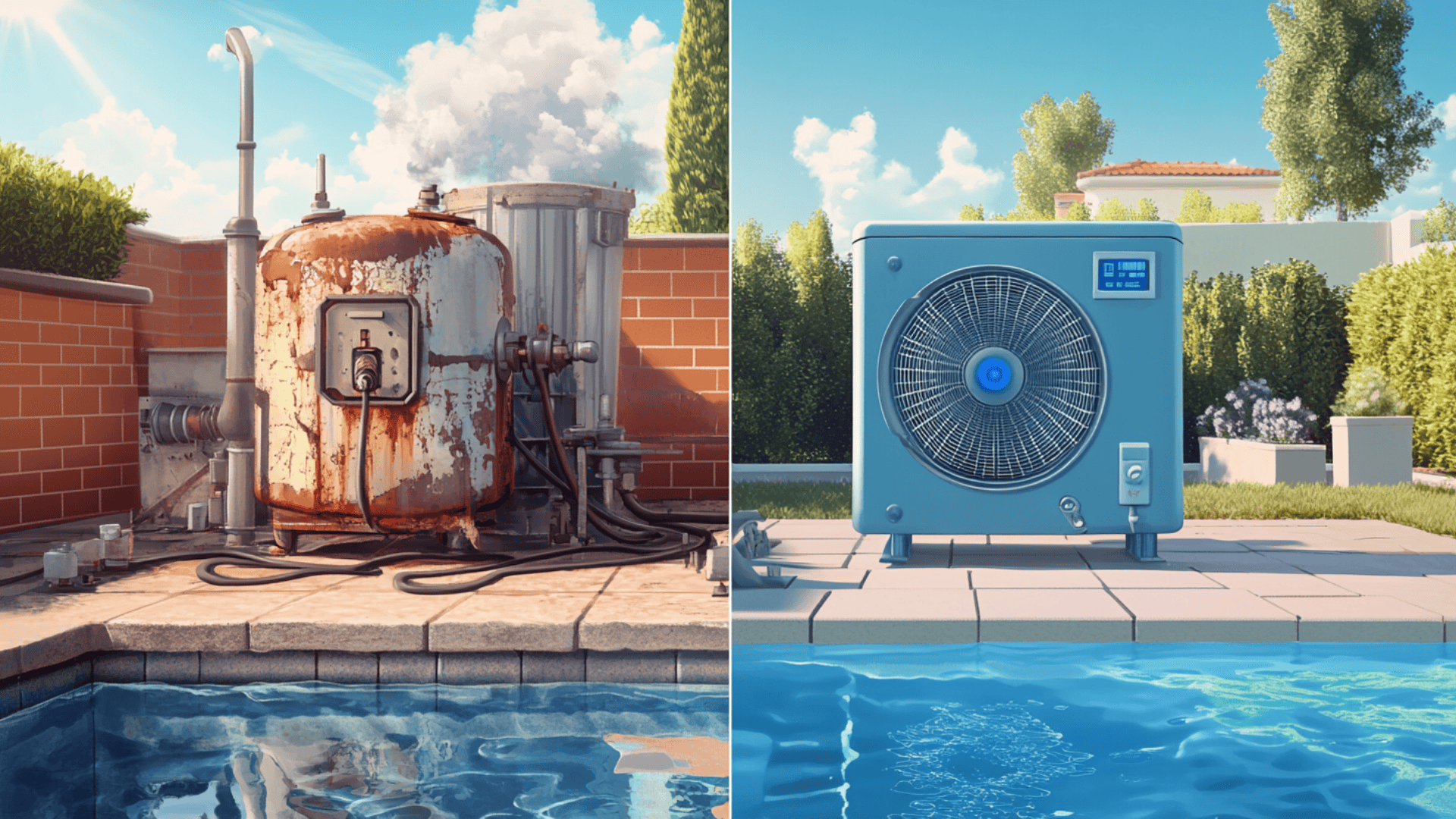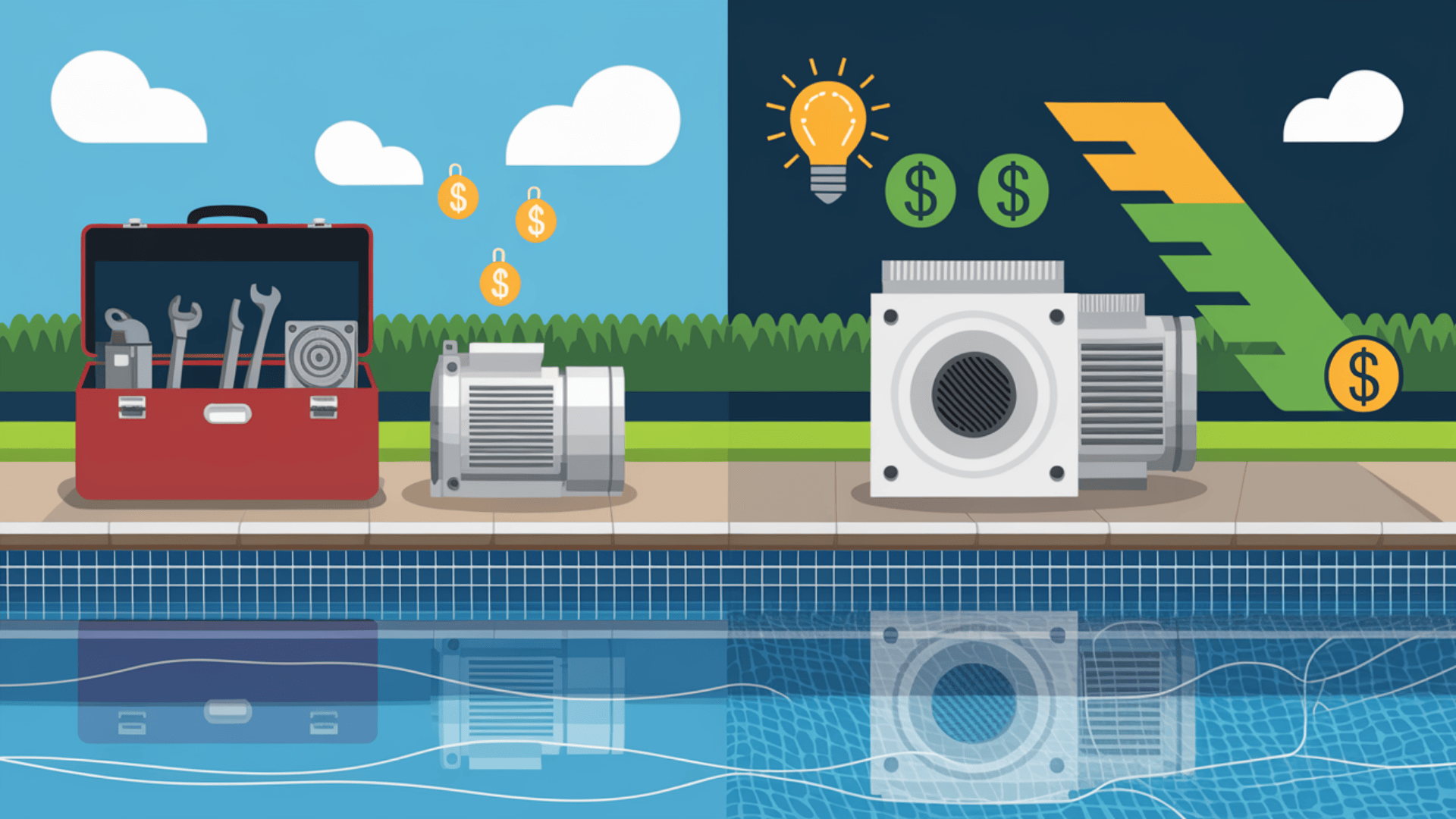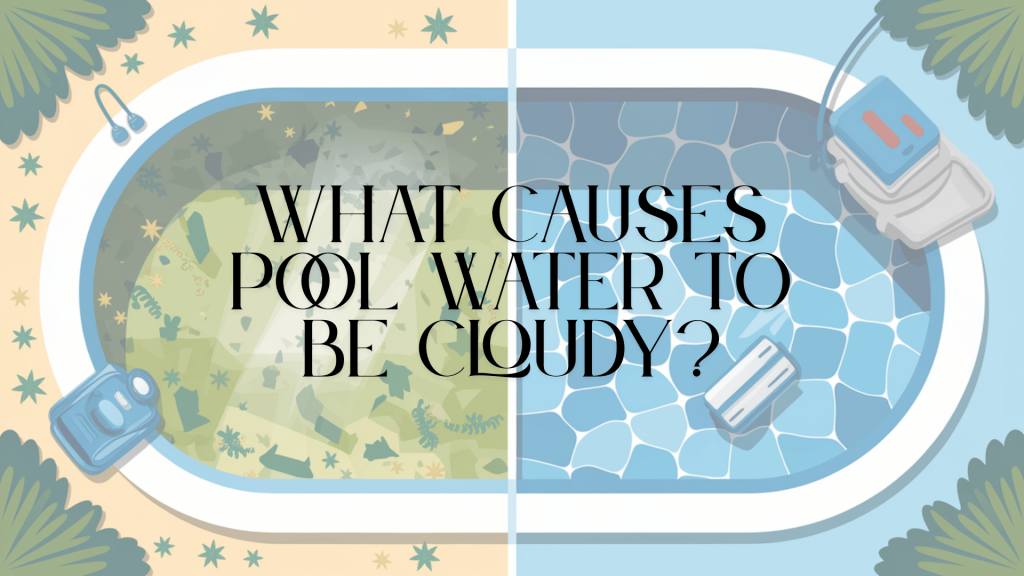Looking at a silent, motionless swimming pool because your pump failed? The cost to replace a pool pump might seem daunting, but it’s an investment that pays dividends in crystal-clear water and lower energy bills.
Pool pump replacement prices vary widely from $700 to $4,000, with most homeowners spending around $1,300.
Beyond just the price tag, understanding what influences costs—from pump types to installation factors—helps you make smart decisions that save money now and for years to come.
Factors such as pump efficiency, horsepower requirements, and regional price differences all play crucial roles in determining your total investment.
Knowing when to repair versus replace and which features matter most for your specific pool setup turns a necessary expense into a strategic upgrade for your backyard oasis.
How Much Does It Cost to Replace a Pool Pump?
Maintaining a clean and safe swimming pool requires a functioning pump. When your old one breaks down, knowing what you’ll pay for a replacement helps you plan.
Most homeowners spend between $700 and $4,000 to replace a pool pump, with a typical cost of around $1,300 for many standard installations. This wide price range exists because several factors influence the cost you’ll pay.
Your final cost depends on the type of pump you choose, the size of your pool, your location, and whether any additional work is required during installation. Labor costs also play a big role in the total price.
We’ll break down all the costs you should consider when purchasing a new pool pump. You’ll see various pump types, sizes, installation costs, and ways to save money on your purchase.
Average Pool Pump Replacement Costs in 2025
Considering a new pool pump? The cost varies based on several factors, including the type of pump, the size of your pool, and your location.
Understanding the various cost elements helps you plan better and potentially save money in both the short and long term. Let’s break down what you can expect to pay in 2025 so you can budget properly and make informed decisions about your swimming pool maintenance needs.
National Cost Overview
Most homeowners spend between $300 to $1,600 for a complete pool pump replacement. This wide range exists due to the numerous options available on the market today. The typical homeowner pays around $1,300 for a standard replacement with installation.
What does this price tag include? Generally, you’re paying for the pump unit itself, labor for removing the old equipment, installation of the new system, basic electrical work, and disposal of the old equipment.
Regional Price Differences
Your location significantly affects what you’ll pay. The West Coast tends to be most expensive ($1,500-$3,500), with San Francisco and Los Angeles at the higher end.
Northeast areas like Boston and New York City also command premium prices ($1,400-$3,200). The Southeast ranges from $900 in rural areas to $2,800 in Miami.
Midwest homeowners can expect to pay $800-$2,500, with Chicago at the upper end. In the Southwest, prices typically fall between $900-$2,700, with Phoenix having higher rates than smaller Arizona communities.
Types of Pool Pumps and Their Price Points
The type of pump you select makes a big difference in both upfront costs and long-term operation expenses. Each option comes with its own set of advantages, limitations, and ideal use cases that can impact your decision.
Pool technology has advanced significantly in recent years, with newer models offering much better efficiency than older versions. The right choice depends on your specific pool setup, usage patterns, and budget constraints.
1. Single-Speed Pumps ($400-$800)
These basic models run at one constant speed. They’re the most affordable option upfront but use more electricity over time.
These pumps work well for smaller pools and budget-conscious owners with simpler systems. The main trade-offs are higher energy bills over time, noisier operation during use, and potential issues with energy codes in certain states.
2. Dual-Speed Pumps ($600-$1,200)
These pumps offer two speed settings, giving you more control over water flow and energy use.
Medium-sized pools benefit most from these models, especially for homeowners seeking improved efficiency without the highest cost. They’re not as energy-saving as variable models, however, and offer fewer control options.
3. Variable-Speed Pumps ($800-$2,500)
The most advanced option lets you fine-tune the exact speed needed, cutting energy use by up to 80%.
Perfect for any pool size and especially valuable for energy-conscious owners planning to stay in their homes long-term. The main considerations are the higher upfront investment and the potential need for professional setup and programming.
4. Solar Pumps ($1,200-$3,000)
These eco-friendly options use solar panels to power your pump, reducing or eliminating electricity costs.
A quick note about head pressure: Pumps come in low, medium, and high-head versions, which affects how much water they can move against resistance (like with waterfalls or long pipe runs). Higher head pumps cost more but are necessary for complex systems.
Matching Pump Size to Your Pool Requirements
Getting the right size pump is crucial for proper function and avoiding unnecessary expenses. A pump that’s too small won’t clean effectively, while one that’s too large wastes energy and money.
The sizing process involves understanding your pool’s volume, filtration needs, and any special features that might require additional capacity. Making the right choice here prevents many common problems pool owners face.
How to Calculate Your Needs
Your pool’s volume is the starting point. A basic formula:
Length × Width × Average Depth × 7.5 = Gallons (for rectangular pools)
Most pools should have a turnover rate that cycles all water through the filter once every 8-10 hours. To calculate your required flow rate, simply divide your pool volume by your desired turnover time in minutes.
For instance, a 20,000-gallon pool with an 8-hour turnover needs approximately 42 GPM (20,000 ÷ 480 minutes).
Common Sizing Mistakes
Homeowners often make several critical errors when selecting pump sizes. Going too large wastes both energy and money, while undersized units lead to poor circulation and inadequate cleaning.
Many people forget to factor in additional features like spas or waterfalls, which require extra capacity. Another frequent mistake is focusing solely on horsepower rather than the more important flow rate measurements.
The link between size and cost is direct – larger pumps cost more upfront but running an oversized pump costs much more over time.
Installation and Labor Costs Explained
The equipment itself is only part of your total investment when replacing a pool pump. Professional installation ensures everything works correctly and safely, protecting both your pool system and your warranty coverage.
Most pool professionals charge by the job rather than by the hour for pump installations, with rates varying based on your location, the complexity of your system, and whether any upgrades or modifications are required.
What You’re Paying For
The labor portion of pump replacement typically runs $200-$700, depending on complexity. Here’s why it varies:
When swapping a pump with the same type and size, a straightforward replacement might only cost $200-$400 in labor.
For first-time setups that require new plumbing and electrical work, expect to pay between $400 and $700. If your new pump needs different wiring (which is common with variable-speed models), you’ll need to add $200-$400 for an electrician’s services. Any modifications to pipes or fittings can increase costs by an additional $100-$300.
The typical installation takes 2-4 hours for professionals, who bring specialized tools and experience with various pool systems.
DIY Considerations
While some handy homeowners tackle this job themselves, caution is necessary. All electrical work must comply with local codes, and improper installation can void the manufacturer’s warranty.
There’s also the risk of equipment damage or leaks if mistakes occur. One advantage of hiring professionals is that their services typically include not only installation but also proper setup and system optimization for optimal performance.
The typical installation takes 2-4 hours for professionals, who bring specialized tools and experience with various pool systems.
Additional Factors That Impact Total Cost
Beyond the basic equipment and installation expenses, several other factors can significantly impact the cost of your pool pump replacement. Being aware of these variables helps you budget more accurately.
Many of these costs aren’t immediately obvious when you first start researching prices, but they can make a substantial difference in your final bill.
Brand Differences
Not all pumps are created equal, and brand choice affects both price and quality:
High-end brands like Hayward and Pentair ($1,000-$2,500) offer longer warranties (typically 2-5 years), superior customer support, and advanced features including smart home integration.
Mid-range options, such as Harris ($700-$1,300), offer good reliability with decent warranties (1-3 years), although they typically include fewer premium features.
For budget-conscious shoppers, Intex and store brands ($400-$800) come with shorter warranties (often just 1 year), minimal features, and potentially shorter lifespans.
Special Situations
Some pools have unique requirements that affect overall costs. If your pump area needs excavation or modification, budget an extra $200-$500 for this work.
Adding smart controls and automation systems ranges from $100-$600 but offers long-term savings through optimized run times.
Many homeowners find value in package deals—replacing your pump alongside other pool work like filter replacement can reduce labor costs by 10-20%.
For protection on your investment, extended warranty options typically run $100-$300, which can be worthwhile for higher-end models.
When to Replace vs. Repair Your Pool Pump
One of the most common questions pool owners face is whether to repair an existing pump or invest in a complete replacement. This decision impacts both immediate costs and long-term expenses.
Making the right choice requires evaluating several factors, including the age and condition of your current equipment, the cost of potential repairs, and the energy efficiency benefits of newer models.
Sometimes what seems cheaper upfront ends up costing more over time.
Warning Signs: It’s Time for a New Pump
Watch for several key indicators that your pool pump needs replacement. Strange noises, such as grinding or screeching, suggest internal damage.
If the motor becomes too hot to touch during normal operation, that’s a serious red flag. Any unit over 7-10 years old is approaching the end of its useful life.
Other warning signs include frequent cycling on and off, inadequate water circulation, visible rust or leaks around the housing, and unexplained increases in your energy bills.
Financial Considerations: Repair, Replacement, and Energy Savings
Understanding the financial aspects of pump repair versus replacement helps make the best decision for your situation.
Most common pool pump repairs include motor replacement ($150-$500), impeller issues ($75-$200), seal replacement ($100-$250), and capacitor problems ($40-$150).
When repair costs exceed 50% of a new pump’s price, replacement usually makes more financial sense. The energy efficiency aspect often tips the scales in favor of replacement.
Older single-speed pumps can cost $800 to $1,200 annually to run, while new variable-speed models may cost only $200 to $400. This means a $1,000 investment could pay for itself in just 1-2 years through lower utility bills.
Some regions also offer rebates of $100-$500 for upgrading to energy-efficient models, making the switch even more attractive.
The Bottom Line
A new pool pump transforms both water quality and monthly utility bills. While costs range from $700 for basic models to $4,000 for premium systems, the investment typically pays for itself through energy savings within one to two years.
Remember that proper sizing and professional installation prevent expensive problems down the road. By weighing repair costs against replacement benefits and considering energy efficiency improvements, you’ll make the right choice for your pool and wallet.
Your sparkling pool and reduced electric bills will confirm that you made the smart choice.

